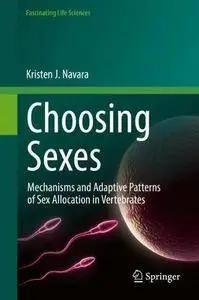Choosing Sexes: Mechanisms and Adaptive Patterns of Sex Allocation in Vertebrates (Fascinating Life Sciences) by Kristen J. Navara
English | 12 Feb. 2018 | ISBN: 3319712691 | 240 Pages | PDF | 7.52 MB
English | 12 Feb. 2018 | ISBN: 3319712691 | 240 Pages | PDF | 7.52 MB
There is extensive evidence that vertebrates of all classes have the ability to control the sexes of the offspring they produce. Despite dramatic differences in the mechanisms by which different taxa determine the initial sex of offspring, each group has found its own way of adjusting offspring sex ratios in response to social and environmental cues. For example, stress is a well-known modulator of offspring sex in members of all groups studied to date. Food availability, and limitation in particular, is another common cue that stimulates biases in offspring sex ratios in a wide variety of species. Offspring sex can be adjusted at the primary level, which occurs prior to conception, or at the secondary level, during embryonic development. While the mechanistic pathways that ultimately result in sex ratio biases and the developmental time-points sensitive to those mechanisms likely differ among taxa, the key involvement of steroid hormones in the process of sex ratio adjustment appears to be pervasive throughout.



